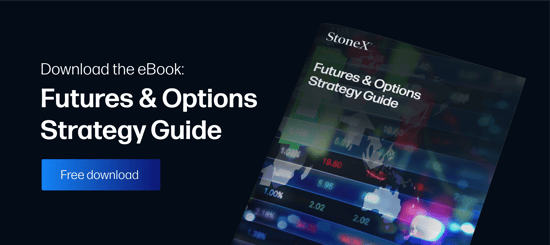In the futures markets, business is conducted on margin using high degrees of leverage. In order for an aspiring trader to place buy and sell orders on the open market, obtaining the services of a futures commission merchant (FCM) is an absolute necessity.
An FCM facilitates the trading operations of the client account. To accomplish this task, it provides market access, extends margin to the trader, and secures customer funds in a segregated account. In return for these services, traders pay commissions to the FCM as compensation for enabling participation in the futures marketplace.
Commission structures are unique to each brokerage firm and broker-client relationship. Traded volumes, account size, service suite, or individual products are a few of the factors that determine commission levels. No matter what type of trader you are, it’s important to understand the impact commissions and fees will have on your bottom line.
A Quick Look at “All-In” Pricing
A common practice in the futures industry is for brokers to quote fees and commissions in terms of all-in pricing. All-in pricing refers to the total cost of executing a single trade from open to close, or one round turn. In futures, the all-in price of one round turn includes several elements in addition to futures commissions:
- Exchange fees: Pass-through fees that are assigned by a futures exchange in return for facilitating transactions.
- Data fees: The cost of streaming live data from the exchange. Data fees are assigned by the exchange on a monthly basis.
- Platform fees: Platform fees vary according to software provider and brokerage. Many platforms assign per trade fees for the use of advanced order-entry functionality.
- National Futures Association (NFA) fee: The NFA fee is payable by FCMs and typically passed on to the trader. As of 2018, the NFA fee is $0.02 per side or $0.04 per round turn.
Some of the above fees are unavoidable. Exchange, data, and NFA fees are set by entities outside of the brokerage firm. Nonetheless, many platform fees can be avoided (some brokers charge no fees for using their trading platforms), and commission structures can be negotiated.
Accounting for the Impact of Futures Commissions
Aside from reducing the all-in cost of executing a trade, the frequency of trading activities is a crucial element in determining your market-related cost liability. Simply put, the more trades you execute, the greater the impact futures commissions will have on your bottom line.
For instance, a discretionary swing trader places relatively few trades and thus is not subject to a great deal of commission expense. This trader takes and holds positions with a low frequency. Conversely, an active intraday trader may execute a large number of trades on a daily basis, racking up a significant commission bill in the process. If your traded volumes are consistently heavy, it’s imperative keep all-in costs, specifically commissions, as low as possible. If not, dodging in and out of positions looking for small profits ceases to be a sensible approach.
Any trades are educational examples only. They do not include commissions and fees.
Developing a strategy that limits the role all-in costs play within the context of overall profitability can help minimize the negative impact of commissions. There are many ways to accomplish this feat. One method is to keep the all-in cost of executing a single trade beneath 3 percent of that trade’s aggregate return. This may be achieved through extending profit targets, manipulating risk vs. reward scenarios, or varying position size.
So, how can a trader incorporate the cost of futures commissions and fees within a viable investment strategy? The first step is viewing the commission as a sunk cost. It’s simply the price of doing business, nothing more. Secondly, understanding the role frequency plays within a trading strategy is key in limiting the influence of commissions and fees on profitability.
Securing a “Fair” Commission Structure
Commission structures come in all shapes and sizes. From flat fees offered to high net-worth participants to volume-based “tiered” structures, retail futures traders have many options to choose among. Often, the best option is what you’re able to negotiate with your broker.
For more information on futures commissions and how to get started minimizing their impact upon your bottom line, consult the pros at StoneX. With more than 25 years in the markets, the team at StoneX has the experience and expertise to help streamline your trade-related cost structure.



